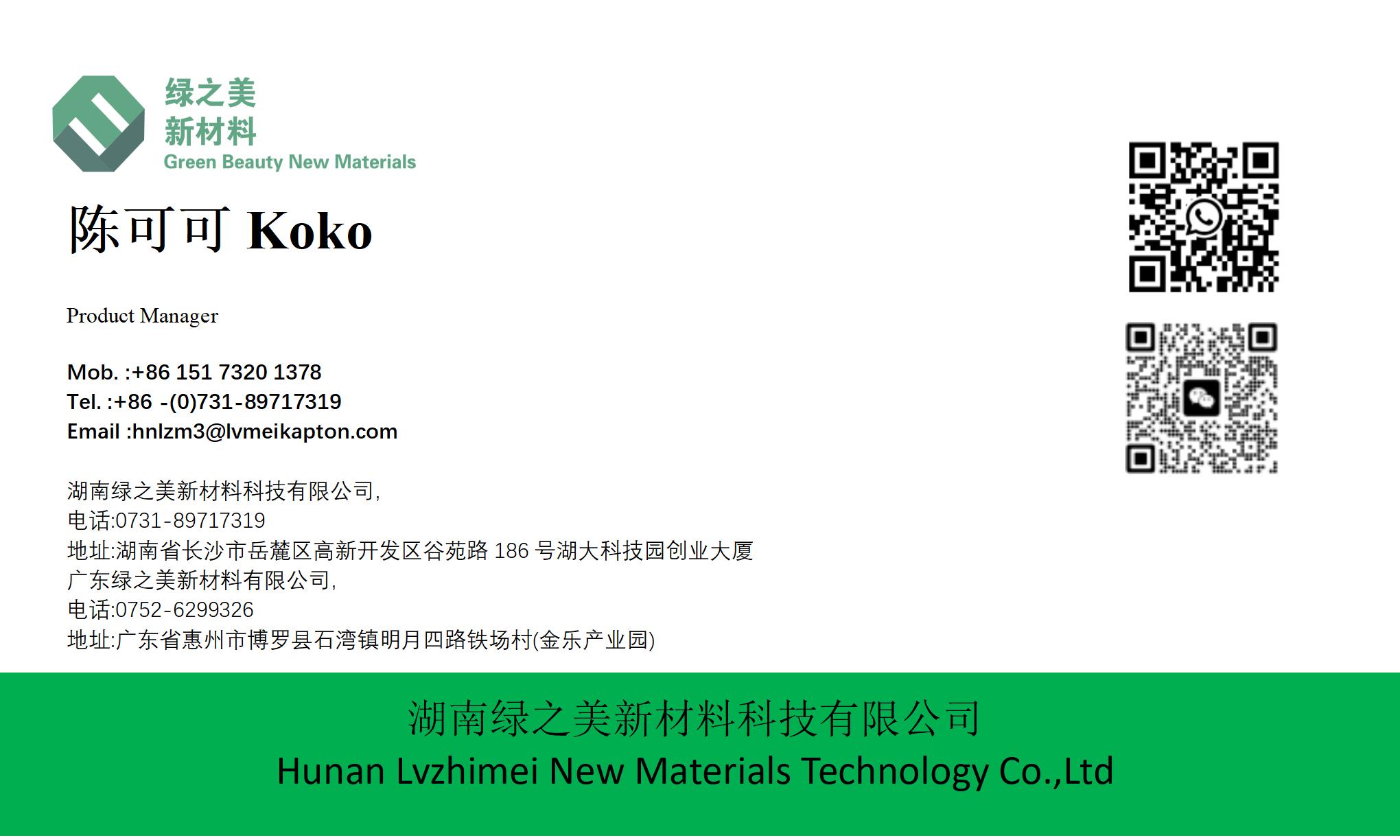hnlzm@lvmeikapton.com
+86 13787123465


Hunan Lvzhimei New Material Technology Co., Ltd.


NameDescriptionContent
How Does Brown Circuit Board High Temperature Tape Enhance Avionics Reliability?|https://www.lvmeikapton.com/
Source:
|
Author:Koko Chan
|
Published time: 2025-04-29
|
29 Views
|
Share:
Avionics systems, the nervous system of modern aircraft and spacecraft, demand unprecedented reliability under extreme operating conditions. Exposed to temperatures ranging from -55°C to 260°C, subjected to intense vibrations during launch, and vulnerable to electromagnetic interference (EMI), these systems require robust protection mechanisms. Brown circuit board high temperature tape, a specialized adhesive solution, plays a pivotal role in ensuring the longevity and performance of avionics components. This article delves into its technical attributes, application scenarios, and real-world case studies to elucidate its contributions to avionics reliability.
How Does Brown Circuit Board High Temperature Tape Enhance Avionics Reliability?
IntroductionAvionics systems, the nervous system of modern aircraft and spacecraft, demand unprecedented reliability under extreme operating conditions. Exposed to temperatures ranging from -55°C to 260°C, subjected to intense vibrations during launch, and vulnerable to electromagnetic interference (EMI), these systems require robust protection mechanisms. Brown circuit board high temperature tape, a specialized adhesive solution, plays a pivotal role in ensuring the longevity and performance of avionics components. This article delves into its technical attributes, application scenarios, and real-world case studies to elucidate its contributions to avionics reliability.
1. Technical Characteristics of Brown Circuit Board High Temperature Tape
Brown circuit board tape is a composite material designed for high-temperature environments. Its core properties include:
1.1 Material Composition
●
Base Layer: Polyimide (PI) film, a thermally stable polymer with excellent electrical insulation and chemical resistance.
●
Adhesive Layer: Silicone-based adhesive, offering zero-residue performance even after prolonged exposure to 260°C.
●
Color and Thickness: Typically brown (for easy identification), with thickness ranging from 0.05mm to 0.13mm.
1.2 Key Performance Indicators
Property | Specification | Importance |
Temperature Resistance | Continuous operation at 260°C, short-term exposure up to 300°C | Ensures functionality in engine bays and exhaust systems |
Adhesion Strength | ≥10 N/25mm (ASTM D3330) | Secure bonding under mechanical stress |
Dielectric Strength | >100 kV/mm | Shields against EMI/RFI |
Residue After Removal | No残留 (per MIL-I-23053C) | Facilitates maintenance without contamination |
Chemical Resistance | Resistant to fuels, oils, solvents, and corrosive gases | Protects components in harsh environments |
2. Avionics Challenges Addressed by High Temperature Tape
Avionics systems face multifaceted challenges that Brown tape mitigates through its unique properties:
2.1 Thermal Management
●
Engine Bay Protection: Aircraft engines generate temperatures exceeding 200°C. Brown tape’s thermal conductivity (0.3 W/mK) aids in dissipating heat, preventing overheating of circuit boards and connectors.
●
Thermal Cycling Resistance: During repeated temperature fluctuations (e.g., from ground to cruise altitude), tape’s flexibility (elongation at break: 50%) prevents cracking or delamination.
2.2 Electromagnetic Shielding
●
Signal Integrity: Avionics rely on sensitive electronics prone to EMI from radar systems or power electronics. Brown tape’s metallized variants (e.g., aluminum-coated PI) provide >90 dB shielding effectiveness at 1 GHz.
●
Grounding Continuity: Tape’s conductive adhesive layer ensures reliable electrical contact, reducing signal degradation.
2.3 Mechanical Durability
●
Vibration Damping: During launch or turbulent flights, tape’s high tear resistance (≥40 N/cm) and shear strength (≥2.5 MPa) prevent component displacement.
●
Abrasion Protection: In areas prone to friction (e.g., cable harnesses), tape’s wear resistance (Taber Abrasion Index: 50 cycles) extends service life.
3. Integration with Multi-Layer Protection Systems
Brown tape is often used in conjunction with other high-temperature materials to create synergistic protection:
3.1 Dual-Layer Defense with PI Tape
●
Application: In rocket guidance systems, combining Brown tape (260°C) with PI tape (300°C) creates a redundant thermal barrier.
●
Advantages:
○
PI’s higher temperature tolerance absorbs peak heat loads.
○
Brown tape’s silicone adhesive seals gaps, preventing gas or liquid ingress.
3.2 PET-Based Tape for Connector Security
●
Adhesive PET Material Tape: Used for securing connectors in avionics bays, this tape offers:
○
High peel strength (≥20 N/25mm) to resist dislodgment.
○
Flame retardancy (UL94 V-0) for safety compliance.
4. Case Studies: Real-World Impact on Avionics Reliability
4.1 Satellite Manufacturing: Signal Loss ReductionA leading satellite manufacturer integrated Brown tape into its communication module assembly. Key findings:
●
Signal Loss: Reduced by 30% compared to traditional Kapton tape due to improved adhesive conformity.
●
Assembly Time:缩短了 15% through tape’s easy tearability and precise application.
●
Longevity: Over 5 years in orbit, components showed no thermal degradation or adhesive residue.
4.2 Commercial Aircraft Engine SensorsAerospace OEMs adopted Brown tape for protecting engine control unit (ECU) sensors. Benefits included:
●
Fault Rate Reduction: From 2.5% to 0.8% attributed to tape’s vibration damping and corrosion resistance.
●
Maintenance Cost Savings: Eliminated costly sensor replacement due to thermal-related failures.
5. Future Innovations and Challenges
While Brown tape has revolutionized avionics protection, ongoing advancements target:
●
Nano-Enhanced Adhesives: Incorporating carbon nanotubes to boost thermal conductivity by 20%.
●
Smart Tape Systems: Embedding sensors to monitor temperature and adhesive integrity in real-time.
●
Environmental Sustainability: Developing fluorine-free formulations to meet stricter eco-regulations.
Conclusion
Brown circuit board high temperature tape’s synergistic blend of thermal resistance, EMI shielding, and mechanical robustness is indispensable for modern avionics. Through its integration into multi-layer protection systems and proven performance in critical applications, it has emerged as a cornerstone of aerospace reliability. As avionics systems evolve toward higher power densities and miniaturization, continuous innovation in tape technology will remain imperative to meet the苛刻 demands of the aerospace industry.



Hunan Lvzhimei New Material Technology Co., Ltd.
Quick Links
Product Categories
© 2024 Hunan Lvzhimei New Material Technology Co., Ltd.All Rights Reserved. Designed by Erge
0731 - 89717319
hnlzm@lvmeikapton.com
+86 13787123465
Room 502, Chuangye Building, No186, Guyuan Road, High-Tech District, Changsha, Hunan, China
CONTACT



